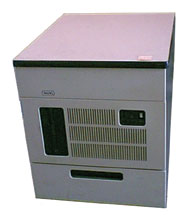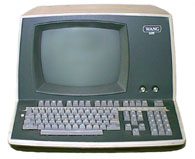
 EDITORIAL TECHNOLOGY
EDITORIAL TECHNOLOGY
|

Above:
Photograph from ABC Notebook
|
ALBANY BUSINESS COLLEGE
GRADUATES AT THE BUREAU
The IBM Selectric typewriter was the latest technology when this picture was taken. It is a 1970s depiction of the staff members at the Law Reporting Bureau who were graduates of the Albany Business College, three of whom, Susan Samson, Carol Olson, and Lana Lanese, are still with the Bureau. Standing from left are Susan Samson, Carol Olson, Barbara Hudson-Lesniak, Marie Harris, and Lana Lanese. Seated is Gretchen Hodges.
|
|
Computers became an integral part of the Law Reporting Bureauís operations in the 1970s with the installation of two terminals remotely connected to the publisher's IBM minicomputer system. These consoles (IBM 3767 communication terminals) were "dumb" typewriter stations that displayed output on typed hard copy rather than display screens. At these stations, operators keyed the full text of each decision received for publication, along with formatting "tags," headnotes, and other editorial enhancements (mostly still prepared by legal editors in longhand). A telephone line modem connection allowed the operator to dial up, log in, and send the decision file to the off-site minicomputer.
In the early 1980s the office migrated to a Wang multiuser system with an on-site OIS 140 minicomputer. The eight networked terminals were outfitted with nine-inch monochrome screens that displayed unformatted text. As with the earlier systems, decisions were keyed in their entirety from typed decisions received via mail from the courts and were interspersed with formatting tags as well as editorial revisions and additions. The decision files were saved on floppy disks that initially were mailed to the publisher. Eventually a modem enabled the transmission of files over telephone lines, and other upgrades were made.
|
 |
Wang OIS 140 minicomputer and 5536 workstation
|
 |
|
|
Ten years later, the Wang system was replaced by interconnected personal computers, a file server, and networked printers. The Windows operating system provided a graphical user interface so that the screen display accurately reflected the text and page formatting. Also in the early 1990s, the New York State Office of Court Administration (OCA) began to collect appellate court decisions electronically and transmit the decision files to the Law Reporting Bureau. A dedicated leased-line connection between the Law Reporting Bureau and the publisherís facilities enabled high-speed exchange of files and reduced time to publication.
|
|


